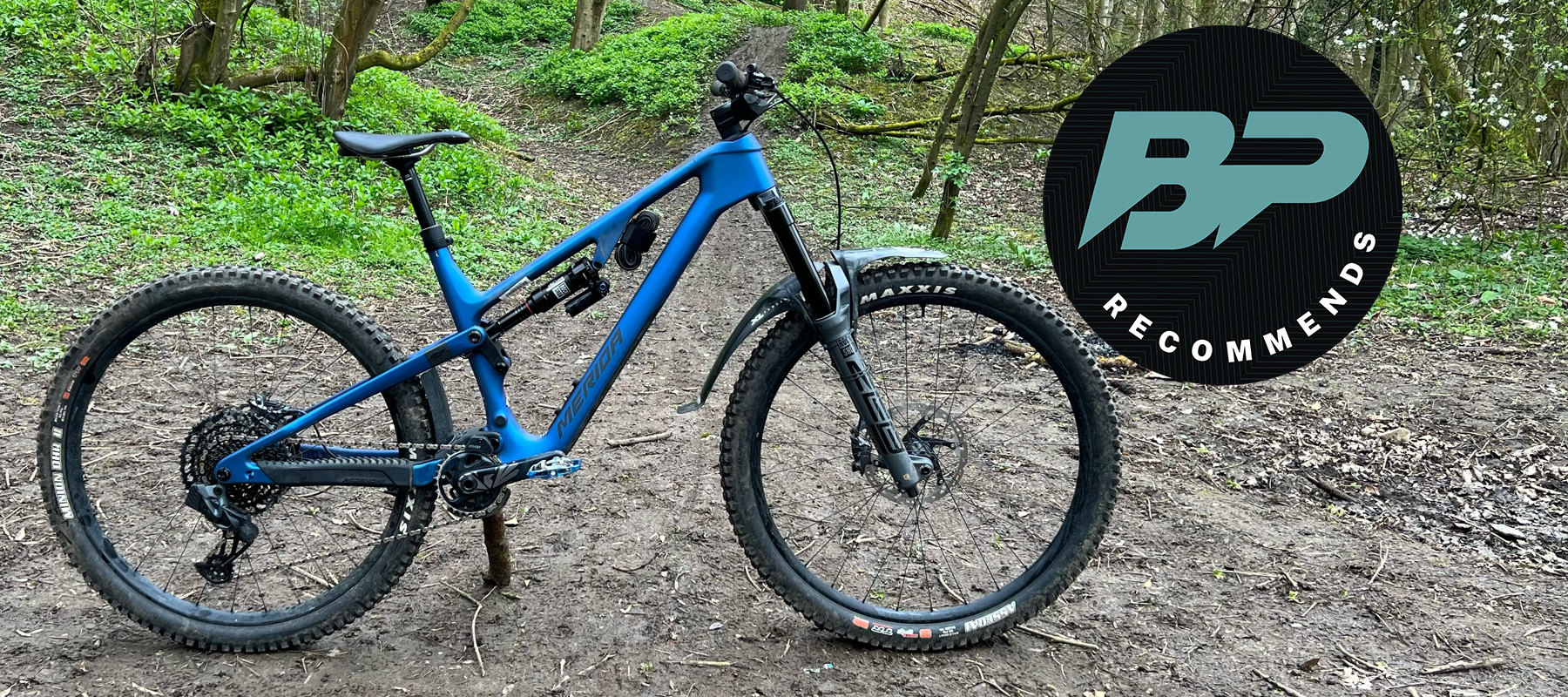Bike Perfect Verdict
Merida’s One-Sixty 8000 is seriously fast, grippy and forgiving on descents without being dull or a pain to pedal on climbs. Multi-mode versatility and appropriately ‘full send' spec choices are a bonus too.
Pros
- +
Super progressive ‘length based’ geometry really works
- +
Supple, grippy suspension with excellent shock
- +
Forgiving and friendly ride feel makes fast riding easy
- +
Great value, fully send ready, size switch enabling parts package
- +
Switchable to 140mm and/or coil and/or mullet
Cons
- -
No geometry adjustment
- -
Through headset and main pivot cable routing
- -
Awkward to use storage
Why trust BikePerfect
Merida’s slick looking, radically shaped One-Sixty is a serious contender for best enduro bike with the versatility to be an excellent trail bike too. I’ve spent a few months getting to know it really well after editor Rich's initial first ride report and that’s helped me appreciate it’s neat detailing and fast, but friendly ride character even more.
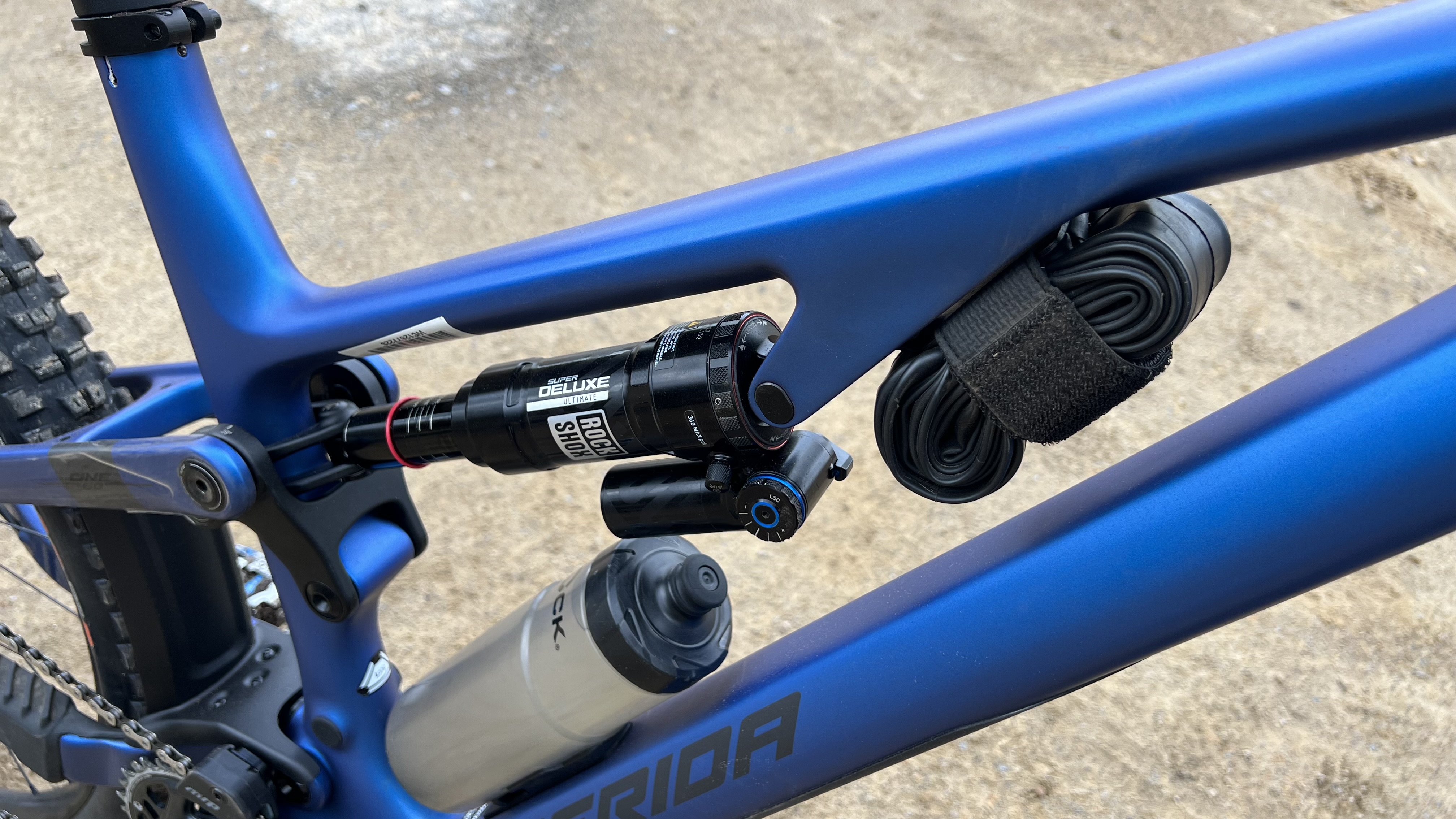
Geometry and design
Merida is twisting the norm right from the start. Rather than the usual XSmall to XLarge sizing, the One-Sixty rephrases that to XShort to XLong under the AGILOMETER banner. That covers a massive reach range from 415mm to 525mm but also includes deliberately short seat tube (445mm high for a 498mm reach on my Large sample) and head tubes so shorter riders who want a long bike won’t get jacked up too high. To stop the monster reach feeling too barge-like, the chain stay length on Long and Extra Long bikes is 438mm. Extra Small, Small and Mid-bikes come with a 27.5-inch rear wheel as standard and a seat stay flip-chip that brings the back end to 434mm. While the 64-degree head angle is par for the Enduro course these days the 79-degree effective seat angle is the kind of radical move you generally only find from small ‘edgy’ brands, not one of the world’s largest bike manufacturers.
Merida’s experience and engineering skills are used to full effect in the Anti Wrinkle System internal compression tech that lets it give the Nano Matrix carbon fiber composite frame a five-year warranty. That even covers 'Cat 5' Bike Park, DH and Enduro Racing use. It has also translated the flex stay design used on its short-travel XC bikes across to the 161mm (172mm in mullet) rear travel of the OneSixty to remove the need for a rear pivot. The FAST (Flexstay-Adjustable-Size-Tuned) back end creates a proportional progression for each frame size too. The One-Sixty shares the same frame with the Merida One-Forty, so with a switch of shock stroke and fork travel you could have yourself a mid-travel trail bike for mellower missions.
Merida’s under-belly access panel for control line threading is aligned with the downtube which means you can theoretically use it as an internal ‘prison pocket’ storage option, if you don’t mind faffing with a filthy release catch. There’s a purpose-made tool roll available as an accessory to stop free-range items from prolapsing onto the floor if you’re not careful.
While it prettifies and quietens things, pushing the rear brake hose through the headset and the main pivot also seriously complicates headset servicing in later life. The vertical mudguard section designed to protect the main pivot ends up working as a mud trap although the aftermarket extended version will hopefully help that. Speaking of mud, while the Allen key set hidden under the saddle is a nice idea it's in the worst place to get covered in crap and eventually, start rusting.
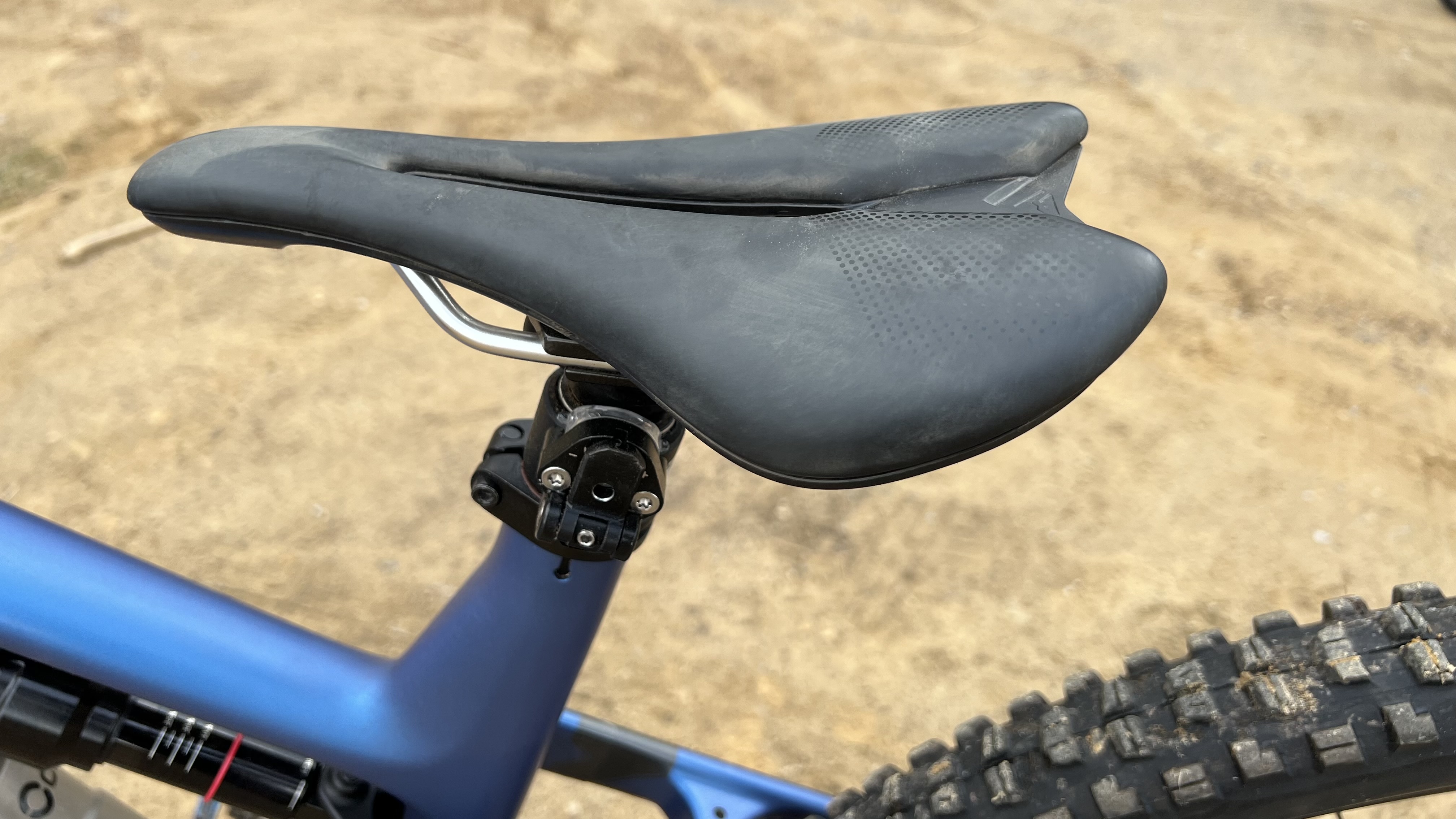
Components and build
It’s not often the dropper post is potentially the most interesting part of a kit package but Merida currently has an exclusive on an externally adjustable 30-230mm stroke dropper design. The little winder box on the side of the seal head looks weird but it works great to set stroke wherever you want and lets taller riders use shorter reach/seat tube frames. Merida also fits higher-rise bars on bigger sizes to preserve proportions too.
Even compared to brands currently running big discounts, you’re getting a lot of top-quality, well-thought-out kit for £6,600 too. RockShox’s Zeb Ultimate fork can have issues but this one delivered an impressively smooth stroke and impeccably poised, widely tuneable and quiet damping throughout testing. The RockShox Super Deluxe shock felt typically excellent too although I did need a lot of pressure in the long-stroke air spring so heavy riders might be close to maximum psi ratings. The SRAM corp provides the GX AXS wireless transmission and the X01 carbon chainset which gets extra security from an MRP chain guide and skid pan. The brakes are Shimano XT though with big 203mm rotors to keep the 15.3kg overall weight in check.
The wheels and tires are worth a notable mention with the Race Face Turbine having a proven solid rim on oversized Vault hubs, to keep things precise and they’re covered by a 'no questions asked’ riding damage warranty. Merida has also sucked up the weight and slow rolling penalty of the MaxxGrip front tire and a reinforced DD casing on each end to give you ‘full send’ versions of the classic ultra-control Assegai and DHR II tires. A very welcome change compared to the lightweight but fragile rubber most manufacturers sneak onto their big travel bikes.

Performance and ride
Considering the palpably gluey grip of the front tire and the stout casings of both, the Merida climbs well. The short shock driver linkages provide plenty of pedal-firming anti-squat in the upper part of the stroke and the flex stays have a springier feel at the start too. That means the One-Sixty is efficient and sporty enough to leave the ‘pedal’ lever alone even when long road climbs were needed to reload the fun gun. When things get stupid steep and techy, the super steep seat angle makes it a proper rock crawler, so you needn’t worry about starting your session at the bottom or booking an uplift. Being able to drop pressures in the DD tires without worrying about burping or splitting the carcass multiplies their grip everywhere. Having rims that dent rather than split, and that will be replaced for free if you properly trash them, makes slamming through rocks and roots or sending drops at teen psi a lot less stressful.
While some bikes are so stiff and precise in their steering or suspension feel that they make you feel agitated and on edge whatever the geometry, the One-Sixty has a distinctively calm character. It never slurs or fumbles its lines though and with 170mm of raked-out fork travel stretching out in front, you can stand central and composed down the steepest and fastest trails. Anti-squat and anti-rise falling away rapidly as you get deeper into the stroke let the lazy leverage rear shock suck up bigger slams and hangs without brake jack, chain pull back or ratcheting heel lift so nothing shunts you forward or sucks speed out of descents either. Add the huge amounts of grip available and it’s a really easy bike to go seriously fast on, and its forgivingness becomes even more of a bonus if you’re at the end of a long day. While I never put a number on it that’s going to be great for enduro racing too.
What continually impressed me was that despite its composure and control and the fact that it’s a lot more bike than I regularly ride in terms of travel, the One-Sixty never felt dull or anaesthetised the fun even out of tamer trails. The relatively short back end means it can hip a turn or manual without excess effort even before you switch it mullet, and the springier, more pedal-responsive upper stroke makes it feel surprisingly lively under power for such a grippy bike. While it’s not naturally the most supportive on berms and compressions of sculpted trails you can stand it up significantly on the low-speed compression adjusters without making it too spikey when things get chattery. If you find the top of stroke spring bucks you occasionally, you can temper that with the rebound too. And if you still find you’ve chosen more travel than you want, switching to 150/140mm is a simple job for a suspension tuner. Alternatively, if you want to go bigger and even smoother it’ll take a coil shock without permanently punishing the bottom-out bumper too.
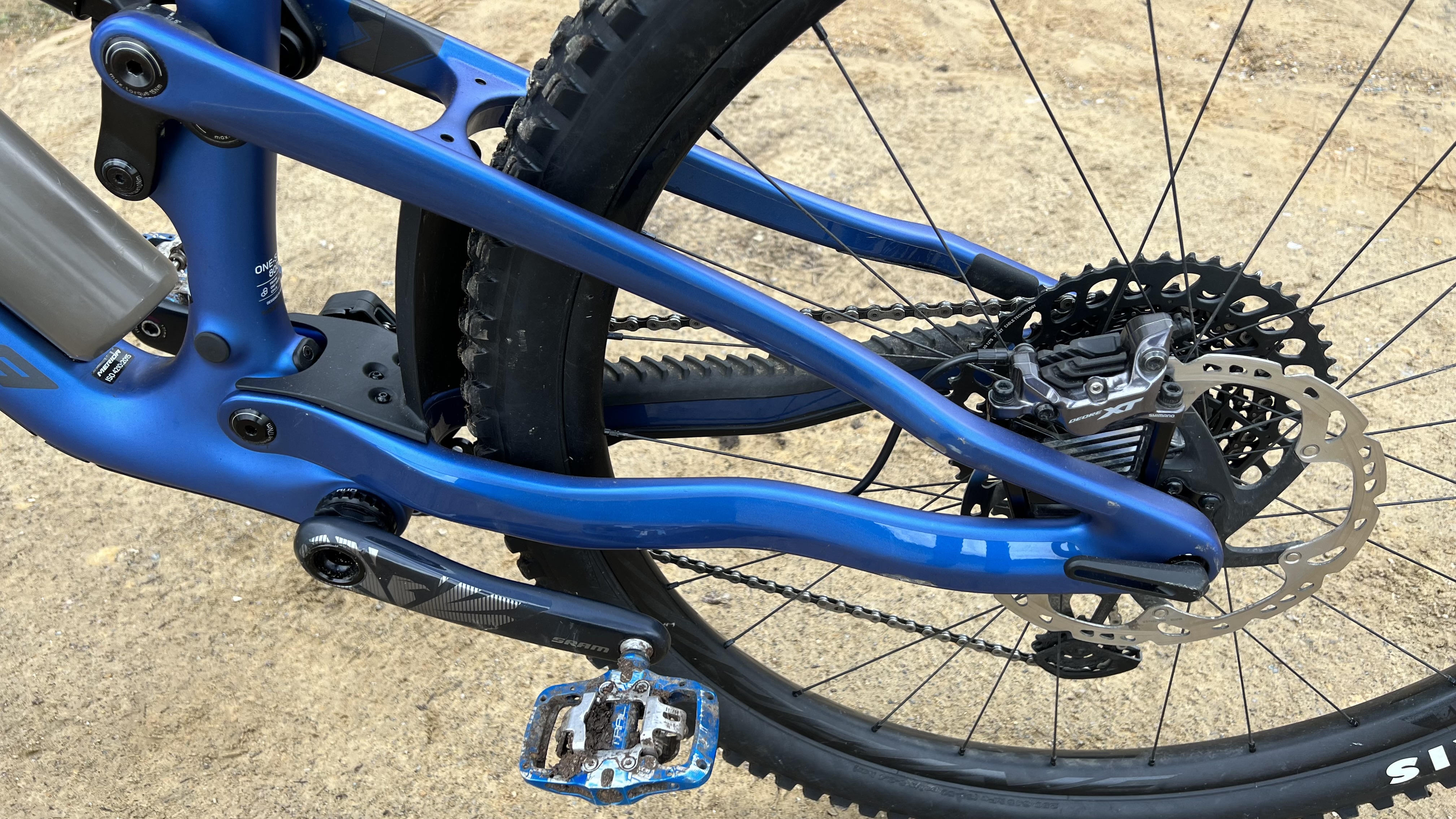
Verdict
While some of the numbers and the suspension design might look on the radical side of reasonable, Merida’s One-Sixty consistently put me in the right position on the bike and the trail. Perhaps most importantly it put me in the right frame of mind to enjoy its easy speed without feeling robbed of the fun or interaction of quick sprints or playful pops at every opportunity. While some riders might miss extensive geometry adjust options, it felt great as it came, and the ability to add a coil shock, turn it into a mullet setup or even a mid-travel trail bike adds bigger picture versatility.
A really good value, top quality spec right down to ‘send proof’ tires and rims completes a great all-round package that makes it easier to overlook awkward internal storage, mud shelf and headset servicing issues. It consistently got positive comments about its clean design and understated aesthetics too, which always helps.
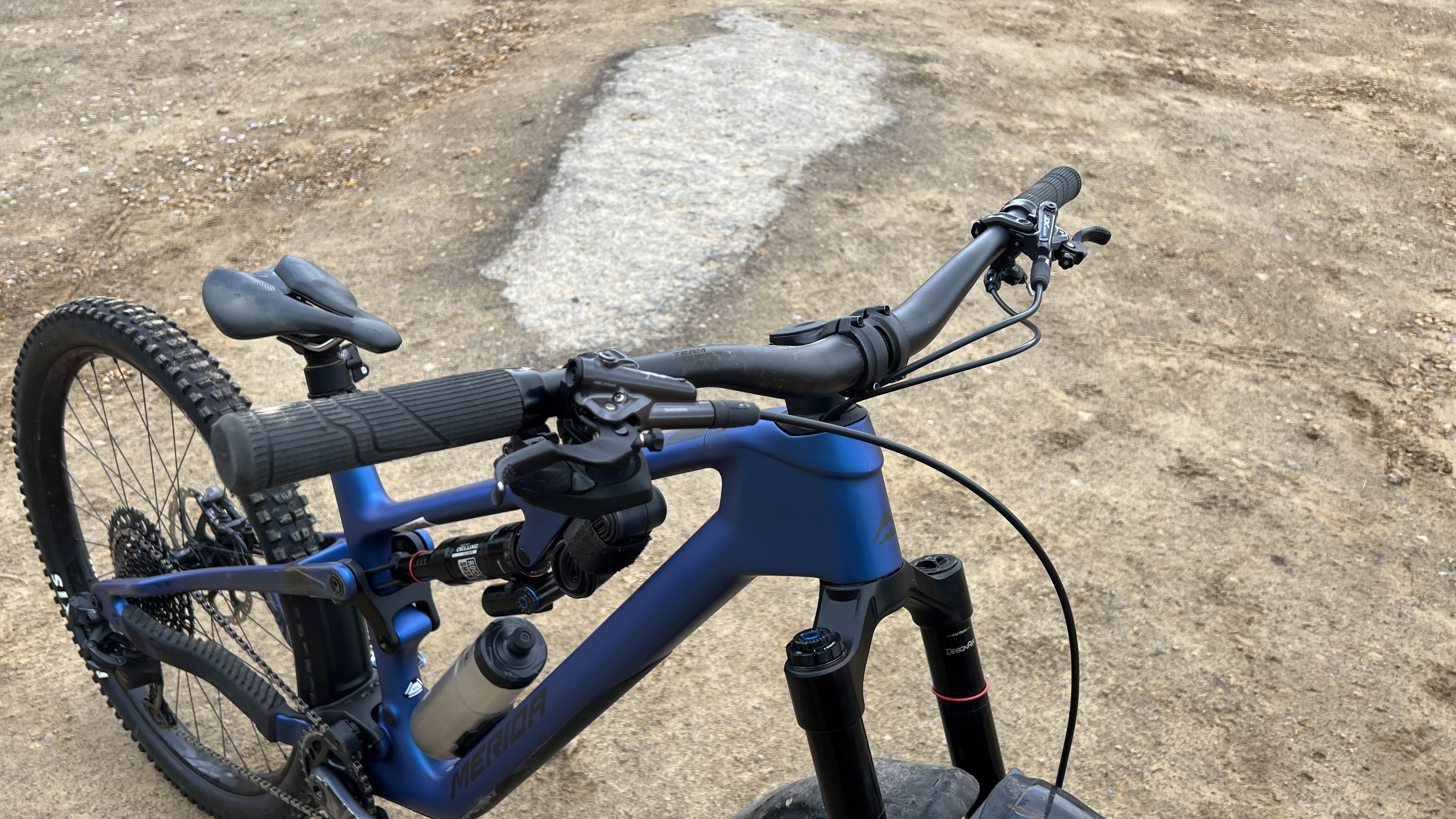
Test conditions
- Surface: Woods, rocks, bigger rocks, roots, loam, slop, soapy clay plus fire road and actual road sections
- Trails: Black/Double Black off piste DH, Black/Red Trail centre DH and local play trails
- Weather: Usual UK winter/spring mess of cold and dry to sloppy storm sessions
Tech specs: Merida One-Sixty 8000
- Frame: One-Sixty CF4 III carbon fiber
- Fork: RockShox Zeb Ultimate, 170mm travel
- Shock: RockShox Super Deluxe Ultimate 160mm travel
- Size: XShort, Short, Mid, Long (tested), XLong
- Weight: 15.3kg
- Drivetrain: SRAM GX AXS, 12-speed
- Brakes: Shimano XT hydraulic disc with RT86 200mm
- Tires: Maxxis Assegai MaxxGrip Exo 29 front and Maxxis DHR II MaxxTerra DD rear
- Wheels: Race Face Turbine R30
- Bar: Merida Team TR 760mm
- Stem: Merida Expert eTRII 40mm
- Seatpost: Merida Team TR 30-230mm dropper post
- Saddle: Merida Expert SL
- Price: £6,600 / €8,999

Guy Kesteven has been working on Bike Perfect since its launch in 2019. He started writing and testing for bike mags in 1996. Since then he’s written several million words about several thousand test bikes and a ridiculous amount of riding gear. He’s also penned a handful of bike-related books and he reviews MTBs over on YouTube.
Current rides: Cervelo ZFS-5, Specialized Chisel, custom Nicolai enduro tandem, Landescape/Swallow custom gravel tandem
Height: 180cm
Weight: 69kg
